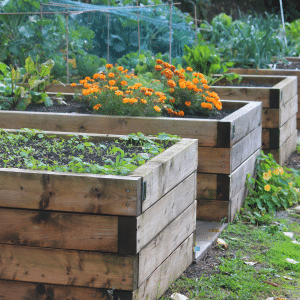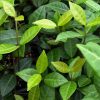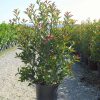
Fall Garden Guide: Fall Container Gardens
As the temperatures begin to ease and the promise of cooler days arrives, North Texas gardeners have a fantastic opportunity to extend the growing season with vibrant fall container gardens. Whether you’re short on space, want a splash of color on a front porch, or seek a low-maintenance setup for a busy schedule, container gardening in the fall is both rewarding and practical. In this guide, we’ll cover our approach to fall containers in North Texas, the best varieties to plant, and practical tips to keep your containers thriving as the season shifts.
Why Fall Containers Work in North Texas
North Texas falls are characterized by warm daytime highs that gradually dip into crisp evenings, with occasional cool fronts that can arrive suddenly. This climate pattern means you’ll want plants that can tolerate heat and humidity while still embracing seasonal color and texture. Container gardening gives you the flexibility to micro-climate your plants by moving pots as needed, providing shelter from scorching late-summer sun and catching the best light during the cooler days of autumn. Plus, containers allow you to experiment with color schemes, from rich burgundies and oranges to silvery greens and deep purples.
Choosing the Right Containers and Soil
- Container choice: Opt for pots with good drainage and sturdy material. Materials like ceramic, terracotta, fiberglass, or resin perform well in North Texas’ temperature swings. Ensure pots have drainage holes and consider using saucers to protect surfaces.
- Soil mix: Use a high-quality potting mix designed for container plants. A blend that includes slow-release fertilizer, peat or coconut coir, perlite, and composted material promotes strong root growth and better moisture retention.
- Drainage and irrigation: Fall can bring sudden rain or dry spells. A well-draining mix helps prevent root rot, and a drip irrigation setup or a soaker hose can make watering more consistent without overdoing it.
Plants to Consider for Fall Containers
North Texas fall containers benefit from a mix of cool-season vegetables, flowering plants, and ornamental foliage that provide color, texture, and seasonal interest. Here are plant varieties to consider:
- Pansies and Violas: Classic fall performers that tolerate cooler nights and give a wide palette of colors.
- Chrysanthemums (Garden Mums): Their blooms peak in fall and add bold color to any container display.
- Snapdragons: Offer vertical interest and come in a range of hues that complement autumn palettes.
- Ornamental Kale and Cabbage: Textural foliage that adds contrast and color from greens to purples.
- Dusty Miller and Silver Mellas: Silvery foliage provides a cool-toned contrast against brighter flowers.
- Wire Vine, Coleus, and Heuchera: For foliage interest. Coleus brings bright leaves in reds, pinks, and greens; Heuchera adds depth with metallic foliage.
- Ornamental Grasses: Short varieties like Miscanthus ‘Little Zebra’ or dwarf fountain grasses bring movement and a soft structure to arrangements.
- Lettuce and Spinach (for edible containers): Fall in North Texas can be perfect for quick-harvest leafy greens if you choose cool-weather varieties and provide some sun.
Color and Texture Combinations
- Warm autumn tones: Combine orange, burgundy, and gold with dark green foliage. Consider yellowing mums with purple violas for a striking contrast.
- Cool contrast: Pair whites and pale blues with deep purple foliage for a modern, airy look.
- Texture mix: Use smooth-leaved plants like violas with crinkled or ruffled leaves from ornamental kale or dusty miller to create visual interest.
Maintenance Tips for a Successful Fall Container Garden
Watering: Fall weather can be unpredictable. Check soil moisture daily and water when the top inch of soil is dry. Containers can dry out quickly on warm days, even in cooler seasons.
Fertilization: Use a balanced, water-soluble fertilizer every 2-3 weeks to support steady growth and vibrant blooms.
Light and sun: Most fall container plants in North Texas prefer full sun to partial shade. Aim for at least 4-6 hours of sun per day for best bloom and foliage color.
Pest management: Monitor for aphids, caterpillars, or whiteflies. A strong spray of water, insecticidal soap, or neem oil can help control common pests without harming pollinators.
Seasonal rotation: Refresh annuals every 6-8 weeks if color fades or growth slows. You can swap in fresh mums or asters as summer plants decline.
Placement Ideas
- Front entry containers: Create a welcoming display with a mix of mums, pansies, kale, and ornamental grasses. Layer heights to create depth.
- Balcony or patio pots: Use hanging or tall containers with cascading varieties like Viola or lobelia for a bright edge, combined with upright mums.
- Edging along walkways: Low, dense plants such as evergreen kale or cabbage, combined with small flowering annuals to maintain year-round structure.
Planning for North Texas Winters
While fall is a vibrant transition, North Texas experiences cool-to-mild winters rather than severe cold. Some of your fall containers can transition into early winter with limited adjustments. Choose hardy varieties such as ornamental kale, cabbages, and some pansies or violas that tolerate light freezes. If you expect freezing temperatures, consider moving containers to a sheltered spot or using frost cloths for protection.
Final Thoughts
Fall container gardens in North Texas offer a wonderful way to celebrate the changing season with color, texture, and personality, even if space is limited. By selecting the right mix of foliage and bloom, ensuring proper soil and drainage, and providing attentive care through the season, you’ll enjoy a thriving display from September through November and beyond. So gather your pots, choose a harmonious color story, and get ready to enjoy a beautiful North Texas fall from the comfort of your own porch, balcony, or patio.



